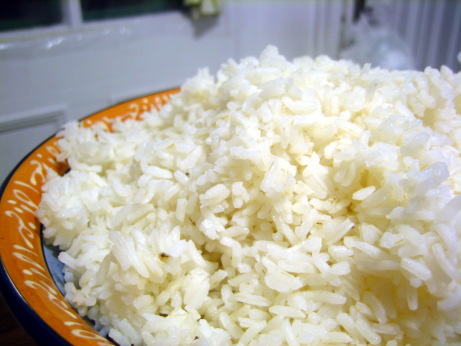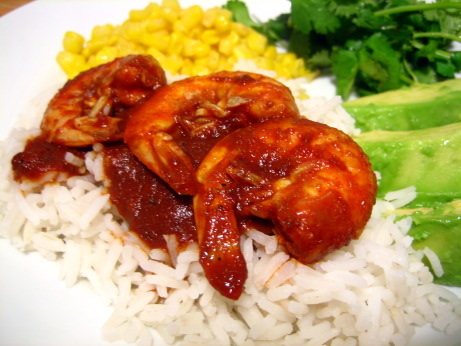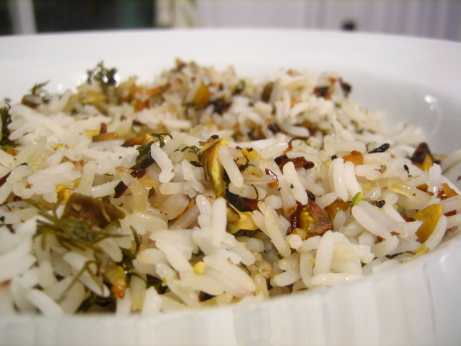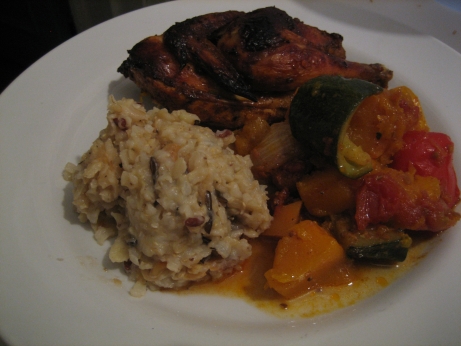Calling this a recipe is a bit of a stretch. It’s one step away from reading “follow package directions”. The ingredients are salt, long-grain white rice, and water. Normally I cook rice by boiling salted water, then adding rice, letting it come back to a boil, then reducing the heat to low and letting it steam for 20 minutes, then a 5 minute rest, off the heat, before serving. The only twist this recipe adds is that after adding the rice you let it boil for a few minutes until steam holes form in the surface, and the top looks dry. It then gets 15 minutes over lowest heat, and a 5 minute rest.
The Book claims to provide every recipe you’ll ever need, and I guess a basic rice recipe is important. The book doesn’t include recipes for plain cooked pasta, or boiled potatoes, but I know enough people who claim not to be able to cook rice that this is probably worthwhile.
The Good: This recipe produces properly cooked rice. The grains were fluffy and separate, soft with a little bit of bite left to them. It’s a simple thing, but poorly cooked rice can be a real disappointment.
The Bad: This technique is ever so slightly more complicated than the dump-the-rice-in-the-boiling-water-and-wait-20-minutes strategy, and I’m not sure the results are any different. Boiling until steam holes appear guarantees that the ratio of water to rice is correct, and if you’re worried about getting the rice just right by all means do this, but I get generally good results with my standard method.
The Verdict: My rice palate is pretty poor, to me, this rice was just as good as what I get by following the instructions on the package. However, the slim percentage of the population who eat rice often enough to have opinions about it, but don’t have a rice cooker, might get some added benefit from this technique.



